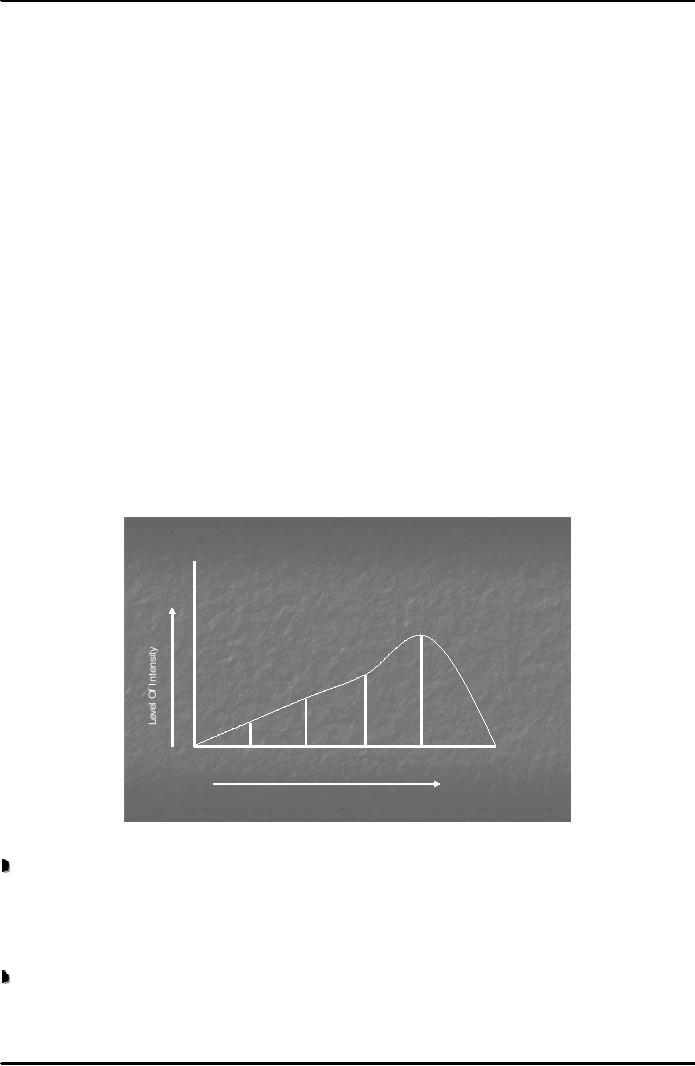 |
CUSTOMER RELATIONSHIP MANAGEMENT (CRM) |
| << E-MAIL MARKETING |
| META INFORMATION >> |

E-COMMERCE
IT430
VU
Lesson
32
CUSTOMER
RELATIONSHIP MANAGEMENT
(CRM)
The
sum of a company's customer
service solutions constitutes its
customer relationship management
(CRM)
system. Level of traffic at the
online business site and the
available resources would
normally
determine
whether or not a business should have
CRM. It provides fast and effective
service to customers
and
ensures that corrective measures
are readily in place. CRM
includes call handling,
sales tracking and
Transaction
support (technology/personnel etc.).
Three tools can be used to
improve customer service,
that
is,
log file analysis, cookies
and data mining. Under
CRM system, call centers
can be set up having
customer
service
representatives who can be
reached trough phone, e-mails or
online chatting. There are
software
tools
or tracking devices that can
provide feedback on how many
number of internet users actually
viewed a
banner
or a marketing message and how
many actually clicked on the
advertisement. Log files consist
of
data
generated by site visits and
include information about each visitor's
location, IP address, time of
visit,
frequency
of visits etc. There are
businesses that provide the
services of analyzing web
log files. The
results
would
show how effective your web
site is and indicate the top-referring
web sites. You know
that cookies
allow
e-commerce sites to record
visitor behavior. They can be used to
track customers online and
do
personalization.
Many customers do not know
that their information is being
collected and used by the
e-
business
site. Thus, informational privacy rights
of customers can be breached in
cases where cookies
are
used.
One major
goal of CRM is to establish a
long-lasting relationship between a company
and its customers.
Good
customer services can help
in building a sense of loyalty
towards company and its
products or
services.
Experts have pointed out
five stages of loyalty as
customer relationships develop over a
period of
time. One
can find that the intensity of
relationship increases as the customer
moves through the first
four
stages.
In the fifth stage a decline
occurs and the relationship
terminates.
See Fig. 1
below:
Awareness
Exploration
Familiarity
Commitment
Separation
Time
Fig.
1
Let us
briefly examine these
stages:
Awareness
This is the
first stage where customers
recognize the name of the company or
any of its products.
However,
they
have never interacted with
the company before. A company/business
can achieve this level by
properly
advertising
its brand.
Exploration
At the
exploration stage the potential
customers know more about
the company or its products.
For
instance,
they may have visited the web
site of the company and have
exchanged any information
with it.
136

E-COMMERCE
IT430
VU
Familiarity
At this
stage, customers have
completed several business
transactions with the company
and know its
policies
regarding refund, privacy of information,
discounts etc.
Commitment
Having
completed a number of satisfactory
transactions, some customers
may have developed a strong
sense
of loyalty or preference for the
products or brand of a company. They
are said to be at the
commitment
stage in their relationship with a
business. Such loyal
customers often tell others
about their
satisfaction
as regards products/services offered by
the company. Sometimes, companies
make concessions
on
price or other terms of
business to bring customers
into this stage.
Separation
After
a period of time those conditions
over which a valuable
customer relationship is established
might
change.
Customers might not be any
longer satisfied with the product
quality or customer service. On
the
other
hand, a company may also
find that a loyal customer
is proving to be very expensive to
maintain.
Thus,
the parties enter into the
separation stage. Note that
the objective of any marketing strategy is
to
bring
the customers quickly to the committed
stage and try to hold them
there as long as
possible.
Life
Cycle Segmentation
These
five stages are also
called customer life cycle.
Using them to create groups of customers
is called
customer
life-cycle segmentation. Segment
information is useful for
companies to develop better
relationship
with the customers. Companies,
thus, know about their
customers and their level
of
relationship
with the company, and can
customize their
product/service.
B2B
Marketing on the
Web
For
effective CRM, it is necessary that
there is complete integration
between different steps in a
customer
transaction.
So, the processes of selling, buying,
marketing, front-end and back-end
operations should be
fully
linked and integrated with
each other.
Key
difference between B2C and B2B is
that in case of B2B there is no direct
contact with the end
users,
whereas
this contact exists in B2C.
Thus, an e-business can have
direct response or feedback from
its
customers
in B2C as compared to B2B.
For example, an online
business that deals in the supply of
raw
material
to an online manufacturing business has a
very limited chance of receiving direct
feedback from
end
customers about its product/services
due to lack of contact with
them. That is one reason
why a
marketing plan is
different in B2B from
B2C.
Search
Engines
A
search engine is a program that
scans web sites and forms a
list of relevant sites based on
keywords or
other
search-engines ranking criteria. It
allows people to find information about
their area of interest out
of
large
amount of information available on the
internet. Examples of famous
e-businesses that provide
search
engine
facilities are google, altavista, yahoo
etc. As a marketer, after you
have launched your
e-commerce
web
site, you should look for
the registration of the same with popular
search engines so that your
site
appears
on search engine
results.
137
Table of Contents:
- E-COMMERCE
- WHAT IS A NETWORK
- HOW MANY CLASS A, B, C NETWORKS AND HOSTS ARE POSSIBLE
- NETWORKING DEVICES
- BASICS OF HTML 1
- BASICS OF HTML 2
- TEXT BOXES, CHECK BOXES, RADIO BUTTONS
- FRAMES AND IMAGES IN HTML
- TAG ATTRIBUTES, SOUNDS FILES, ANIMATIONS
- STYLE SHEETS 1
- STYLE SHEETS 2
- SOME USEFUL STYLE SHEETS PROPERTIES
- JAVA SCRIPTING 1
- JAVA SCRIPTING 2
- JAVA SCRIPTING 3
- JAVA SCRIPTING AND XML
- CLIENT AND SERVER SIDE PROCESSING OF DATA
- APPLETS, CGI SCRIPTS
- MAINTAINING STATE IN A STATELESS SYSTEM
- INTEGRATION WITH ERP SYSTEMS
- FIREWALLS
- CRYPTOGRAPHY
- HASH FUNCTION AND MESSAGE DIGEST
- SYMMETRIC KEY ALGORITHMS
- VIRTUAL PIN PAYMENT SYSTEM
- E-CASH PAYMENT SYSTEM 1
- E-CASH PAYMENT SYSTEM 2
- SECURE SOCKET LAYER (SSL)
- E-BUSINESS: DISADVANTAGES OF E-BUSINESS
- E-BUSINESS REVENUE MODELS
- E-MAIL MARKETING
- CUSTOMER RELATIONSHIP MANAGEMENT (CRM)
- META INFORMATION
- DATA MINING
- CONFIDENCE AND SUPPORT
- ELECTRONIC DATA INTERCHANGE (EDI)
- PERSONAL FINANCE ONLINE
- SUPPLY CHAIN
- PORTERíS MODEL OF COMPETITIVE RIVALRY
- BARRIERS TO INTERNATIONAL E-COMMERCE
- ELECTRONIC TRANSACTIONS ORDINANCE, 2002 - 1
- ELECTRONIC TRANSACTIONS ORDINANCE, 2002 - 2
- ELECTRONIC TRANSACTIONS ORDINANCE, 2002 - 3
- GLOBAL LEGAL ISSUES OF E-COMMERCE - 1
- GLOBAL LEGAL ISSUES OF E-COMMERCE - 2